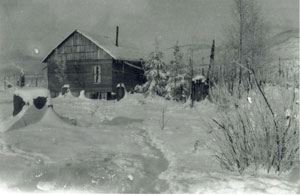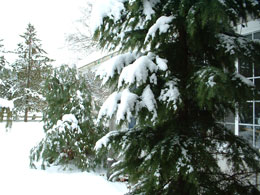The photo on the left is the Royal Stump Ranch during the winter of 1927, at the time this article was written by Otto Klement in a local Skagit Co. paper. As you can see, when mother nature decides to pay a visit up this way, we can be heavily dumped on- as we were this winter of 2004 (as shown at my home in photo on right, about a mile from the old stump ranch).
I was looking for an article on winters in the earlier days of recorded Skagit county and came across this one by Mr. Klement. He also comments on the potential of Skagit county as a tourist attraction, which turned out to be very prophetic.
|

